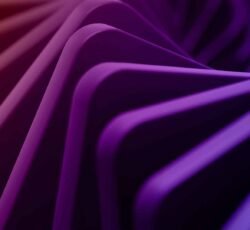There has been a steady increase in questions about Legal Entity Identifiers (LEIs). Some clients might need to obtain an LEI by 3 January 2018 in order to invest or disinvest. This article covers everything you need to know.
There are five aspects to consider –
• The background to LEIs;
• What an LEI is;
• Why it matters;
• Who needs an LEI;
• How to get an LEI;
The background to LEIs
This initiative arises out of the 2008 financial crisis when regulators around the world recognised that one of the weaknesses in global financial systems was the inability to readily identify and track all parties to financial transactions. For example, lenders in the US wrapped mortgage loans up in packages called variously mortgage backed securities (MBS) or commoditised debt obligations (CDO). In principle, these were a positive concept as they enabled lenders to remove chunks of lending from their books in exchange for cash that they could lend to other borrowers so driving business expansion or the housing market. However, Banks in the US increasingly included toxic loans in the securities. This risk was essentially hidden from buyers of these securities. In addition, securities were further packaged up, making it even more difficult to identify the true nature of the risk of the underlying assets. All that was bad enough but when these packages were then sold to other lenders who might well have sold part of the security off previously it all became very incestuous … and dangerous. The scenario was similar to the crisis that beset Lloyds members some years ago where a member would off load some risk to another member who in turn offloaded to another and so on. It turned out that the original member had often unknowingly reinsured a risk that they believed they had previously offloaded. That’s where the global agreement to require LEIs (endorsed by the G20) comes in. With LEIs in place, identifying all principal and underlying parties to financial transactions in any jurisdiction becomes a practical reality.
What an LEI is
An LEI is a unique identifier for persons that are legal entities or structures including companies, charities and trusts.
Why it matters
MIFID II (effective 3 January 2018) requires all MiFID investment firms (excluding collective portfolio management investment firms but including authorised credit institutions), operators of trading venues and UK branches of third country investment firms to comply with transaction reporting obligations.
And, from 3 January 2018, all firms subject to MiFID II transaction reporting obligations or that are a UK branch of a third country firm, will need to ensure that any clients eligible for an LEI have one before executing on their behalf any transaction in a financial instrument that is subject to the MiFID II transaction reporting obligations. These financial instruments include shares, bonds, collective investment schemes, derivatives and emission allowances meeting the conditions in article 26 of MiFIR (this directive deals with reporting requirements but does not need more explanation here).
Any client who is a legal entity or structure, including a company, a charity or a trust, will need to make arrangements to obtain an LEI code if they want the firm to continue to act for them from 3 January 2018 onwards.
Who needs an LEI
Well that is covered in the previous section … legal entities! However, it is not just as simple as that.
First, we need to understand what a legal entity is and is not. An alternative term is ‘non-natural person’, which is anyone who is not a ‘natural person’. Generally, you could consider a natural person to be an individual. But an individual can be a legal entity! The deciding factor is whether the individual is acting in a professional or non-professional capacity. The former would be a legal entity, the latter not.
The easiest definition is that a legal entity is one that is legally able to enter into contracts for financial instruments while acting in a professional capacity.
It is important to note that –
• Only legal entities are ELIGIBLE to apply for an LEI;
• A legal entity only NEEDS to have an LEI if it wants to enter into a transaction for financial instruments.
The following is a helpful but not necessarily comprehensive list of when an LEI is or is not required.
• Trusts (but not Bare Trusts);
• Companies (Public and Private);
• Pension Funds (but not Self-Invested Personal Pensions);
• Charities and Unincorporated Bodies.
Always assuming, of course, that the entity is a party to a financial transaction.
Note the exclusion of Bare Trusts (and note that it is not a Bear Trust, which is either a charity for children with cerebral palsy or an international organisation supporting scientific research … both of which incidentally would need a LEI if they wished to make an investment!).
The other point to note is that an LEI is not required if investment is being made exclusively in collectives such as investment bonds, OEICs or unit trusts.
Note that investment trusts and ETFs are not excluded from the requirement for a LEI. Advisers might need to consider whether the cost of an LEI has any impact on a decision to use other than collectives in portfolios.
As an aside, it seems likely that investment providers will require individual personal identifiers for investors who are not legal entities. In the UK, this requirement is likely to be met by the individual’s NI number.
How to get an LEI
An LEI is available from bodies accredited by the GLEIF, or bodies endorsed by the LEIROC, as an authorised Local Operating Unit (LOA) for the global allocation of LEIs. A list of all Local Operating Units can be found on the GLEIF’s website. For the UK, the accredited body is the London Stock Exchange but LEIs can be obtained from any LOA.
The GLEIF has also introduced the concept of a ‘registration agent’ to assist legal entities in accessing the LOA, so you might find, for example, some DFMs willing to arrange an LEI where an investor requires it. Issuing and arranging for the issue of an LEI is a not an activity required to be regulated by the FCA.
The cost
A Local Operating Unit may charge a fee for allocating the LEI. The fee in the UK is currently £115 plus VAT with an annual renewal fee of £70 plus VAT.







New Content Integration with Pacific Asset Management
Doug McFarlane Suitability 2025, Content Integration, content management, EU, FCA, Integration, Investment, ML, Pacific, Pacific Asset Management, PI, Update
We have some exciting news on the latest upgrade to ATEB Suitability on 9 April 2025. This update comes at no additional cost and provides a new addition to our content integration library. We have partnered with Pacific Asset Management to provide our customer firms with access to the following: A description of their service […]